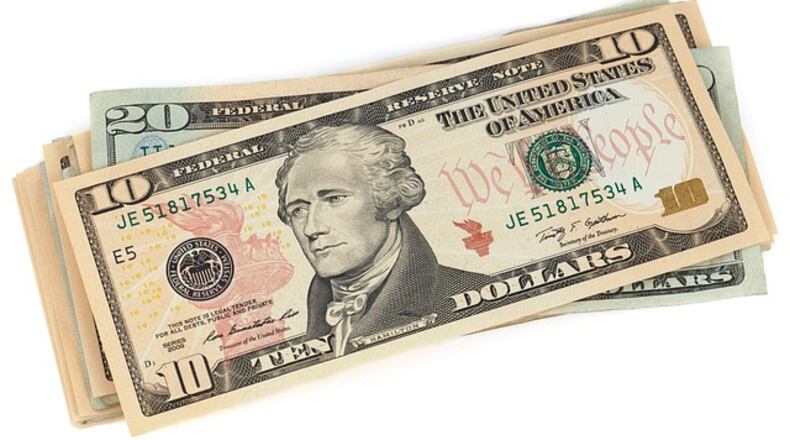The bump, which took effect Jan. 1, 2021, will bring a 40-hour workweek employee to making $352.
For tipped employees, the minimum wage increased by 5 cents to $4.40 an hour.
The minimum wage rate applies to employees of businesses with annual gross receipts of $323,000 per year. For employees at smaller companies and for 14- and 15-year-olds, the state minimum wage is $7.25 per hour, which is tied to the federal rate.
Richard Stock, director of the Business Research Group, said this increase in the minimum wage will have little to no impact on the plight of minimum wage workers.
“At some level it is adding insult to injury,” Stock said. “It is a very small increase.”
In 2006, Ohioans voted for a constitutional amendment to bump the state minimum wage up to $6.85 an hour, up from $5.15, and tie future annual increases to the rate of inflation. The 2007 increase was the first minimum wage boost since 1996.
Stock said the minimum wage is lower today than it was in 1968. The minimum wage in 1968 in today’s dollars would be around $12 an hour, he said.
“Minimum wage workers are worse off now than they were in the 1960s,” Stock said.
Alaska and Washington also increase their minimum wage based on inflation or cost of living increases. In November, Florida residents voted to raise the minimum wage to $15 by 2026. California will have a $15 minimum wage by 2022 for businesses with 26 or more employees. Connecticut and Massachusetts’s minimum wages will reach $15 by 2023. The federal minimum wage has been $7.25 since 2009.
Michael Shields, a researcher for Policy Matters Ohio, said the 10 cent increase is a safeguard that prevents Ohio’s minimum wage from losing buying power, which is important but doesn’t actually increase the wage in a significant way.
There was a campaign in 2020 to raise the minimum wage to $13 an hour. This effort was derailed by the coronavirus pandemic and it did not make it on the ballot in November.
“The coronavirus pandemic has underscored how important the work frontline workers do and how undervalued it is,” Shields said. “The folks being paid some of the lowest wages are keeping us going during this pandemic taking care of the elderly and delivering prescriptions and food.”
Stock said the Ohio minimum wage is lower than a living wage.
According to the MIT Living Wage calculator, Ohio’s minimum wage for a an adult and one child is $23.31, which is significantly lower than the minimum wage. A living wage for one person with no children is $10.86, according to the calculator.
Most retail or restaurant jobs that pay minimum wage don’t offer employees 40 hours a week, Stock said. So many are working about 30 hour or working more than one job.
Stock said that if Ohio increased wage rates, then a lot of other aspects of “the safety net” would be much less needed.
“We know that many Walmart workers, for example, are using SNAP benefits because the wages they’re being paid are too low,” Stock said. “What were doing to some level is subsidizing very large corps to allow them to pay lower wages than they would have to pay otherwise.”
Stock said studies over the last 30 years show almost no impact on employment from raising the minimum wage. Many who argue against raising the minimum wage say there would be adverse impacts to teenage employment or a higher wage means being able to pay fewer workers.
“The reality is that the impact on the living standards of minimum wage workers far outweighs whatever minor impact to teenage employment occurs,” Stock said.
States with 10 lowest minimum wages in 2021, according to the Department of Labor
43. Missouri - $10.30
44. Hawaii - $10.10
45. Minnesota - $10.08
46. Florida - $10 (effective Sept. 2021)
47. Michigan - $9.65
48. Nebraska - $9
49. Ohio - $8.80
50. Nevada - $8.75 (effective July 2021), West Virginia - $8.75
51. 19 states have a $7.25 minimum wage. Alabama, Idaho, Indiana, Iowa, Kansas, Kentucky, Louisiana (no state minimum), Mississippi (no state minimum), New Hampshire, North Carolina, North Dakota, Oklahoma, Pennsylvania, South Carolina (no state minimum), Tennessee (no state minimum), Texas, Utah, Wisconsin, Puerto Rico - $7.25
52. Georgia and Wyoming - $5.15 (Employers subject to the Fair Labor Standards Act must pay the $7.25 Federal minimum wage)
About the Author

